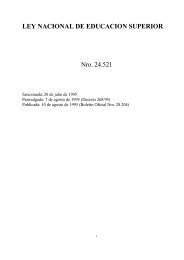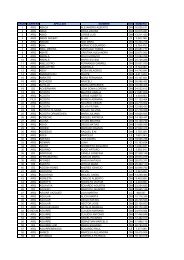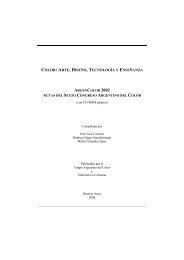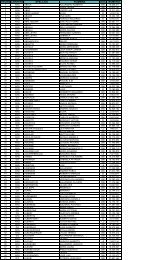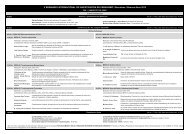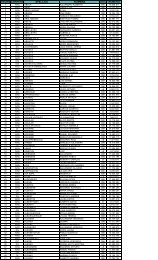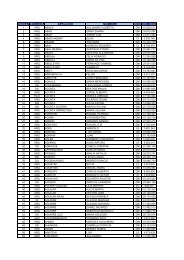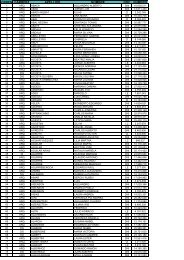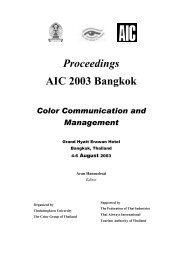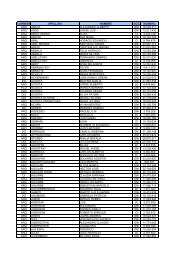Light as a genetic element of the image
Light as a genetic element of the image
Light as a genetic element of the image
Create successful ePaper yourself
Turn your PDF publications into a flip-book with our unique Google optimized e-Paper software.
AIC 2004 Color and Paints, Interim Meeting <strong>of</strong> <strong>the</strong> International Color Association, ProceedingsJacques Herzog and Pierre De Meuron: Goetz Collection, Munich,1992. This is an exhibition gallery. At a first glance it might recall<strong>the</strong> structural clarity and functionality <strong>of</strong> pieces by Mies van derRohe, but a deeper analysis reveals a more complex and uncertaincharacter. Distance between apparent and real is shown also in <strong>the</strong>building structure. The rhythmical division that <strong>the</strong> supportingvertical <strong>element</strong>s produce, call for diagrammatical clarity inrationalism. The upper and lower floor feature light in <strong>the</strong> way <strong>of</strong> <strong>as</strong>kylight.Norman Foster & partners: Centre <strong>of</strong> Industrial Promotion,Duisburg, Germany, 1993. We can watch light andarchitecture joining in a perfect way. This new city councilpromotion central <strong>of</strong>fice intends to be emblematic <strong>of</strong>German region Ruhr new economical revitalisation. Thisbuilding is sited in microelectronics Park, also by Foster,which is composed by a group <strong>of</strong> buildings set downtown.The Promotion Centre is gl<strong>as</strong>s coated over <strong>the</strong> concretestructure. This makes light to reflect outside <strong>as</strong> a screen. Ifwatched at night, with its blinds open, this building gl<strong>as</strong>soutside wall h<strong>as</strong> a minimalist interpretation. In daylight, <strong>the</strong>shinning closed blinds <strong>of</strong>fer an appearance <strong>of</strong> a reflectingand opaque frontage. Foster’s modernism exemplifies <strong>the</strong>use <strong>of</strong> light <strong>as</strong> <strong>the</strong> main character in architectural design.Friedrich Förster and Sabine Weissinger: The Magic House. These artists have developed atechnique in which big slide <strong>image</strong>s are projected over huge surfaces. They have beendeveloping this technique since <strong>the</strong> eighties and have come up with a computer b<strong>as</strong>ed controlsystem. This way <strong>image</strong>s can be manipulated to fit <strong>the</strong> building structure and dimensions. One<strong>of</strong> <strong>the</strong> main characteristics <strong>of</strong> <strong>the</strong> Magic House project is that integration between buildingand aes<strong>the</strong>tic design projection is perfect. Building façade turns constantly into differentconceptions according with <strong>the</strong> topic related, changing from dynamic moving <strong>image</strong>s withsound to those slow track changing static ones. “Our main target is not just to illuminatebuildings, but to enhance its architectonic, historical and aes<strong>the</strong>tical values, <strong>as</strong> well <strong>as</strong> <strong>the</strong>same place where <strong>the</strong>y are set”, says Förster. Building artistic lightening and projecting is ayoung gender within <strong>the</strong> art practices. Förster and Weissinger illuminated <strong>the</strong> inner spaces inCologne St. Peter’s gothic ca<strong>the</strong>dral, accepting <strong>the</strong> challenge <strong>of</strong> lightening <strong>the</strong> second biggestgothic ca<strong>the</strong>dral in <strong>the</strong> world. After <strong>the</strong> sunrise, <strong>the</strong> Magic House spectacle started when 6huge projectors were switched on inside <strong>the</strong> ca<strong>the</strong>dral. Projected light over walls, vaults, highaltar and columns would show <strong>image</strong>s <strong>of</strong> architectural composition taken from <strong>the</strong> samebuilding: tessellated pavement, tracery and stained-gl<strong>as</strong>s windows... Images changed speedfrom a slow star rain to a quick flow <strong>of</strong> <strong>image</strong>s turning colours and shapes. The spectatorperceives a sudden sensation <strong>of</strong> sliding walls, rotating columns and that <strong>the</strong> whole churchstarts to move. Movements are s<strong>of</strong>t, though, and invite <strong>the</strong> audience to enjoy <strong>the</strong> show andthink over life, colour, movement... “We search for a 3D sensation with our projections sothat we can provide <strong>the</strong> inner spaces with life”, says Förster.268



